Scroll on Dwayne ‘the Rock’ Johnson’s Instagram and you’ll inevitably find a video of him lifting weights shouting “FOCUS” at someone offscreen. However, it might not be as simple as that for some. If you’re one of those people, fear not. You aren’t alone by any stretch of the imagination.
Obtaining focus can often feel like an uphill battle, especially in the present world. Think about the ding your phone makes when you get a text. it’s designed to acquire your immediate attention; to stop everything you’re doing and focus on this notification. With your focus dragged down to the small screen in your hand, the major social networking apps lick their proverbial lips, relishing the opportunity to consume their product and collect your data.
There’s a reason we all continue returning to apps like Twitter and Instagram. They’re designed to keep you scrolling for eternity; just when you think you’ve consumed all of the dog videos and psychology threads that have ever existed, bam, a new hashtag pops up. It can feel never ending.
In fact, keeping your focus on one, important task is somewhat of a valuable skill in today’s society. In an era where distraction is easier to find than focus, learning how to remove the struggle can be vital in pushing the envelope of what you can achieve. Through understanding how your brain reacts to productivity and implementing the tips in this article, focus will move into, well, focus.
After all, it shouldn’t be a struggle in the first place.
Eliminating Distractions
As this article has already touched on, distractions are focus’ worst enemy. You cannot hope to have any kind of sustained focus if you succumb to distractions too easily. The thing is, you don’t always know what or when a distraction pops up. The solution is to eliminate the potential for this to happen before it begins.
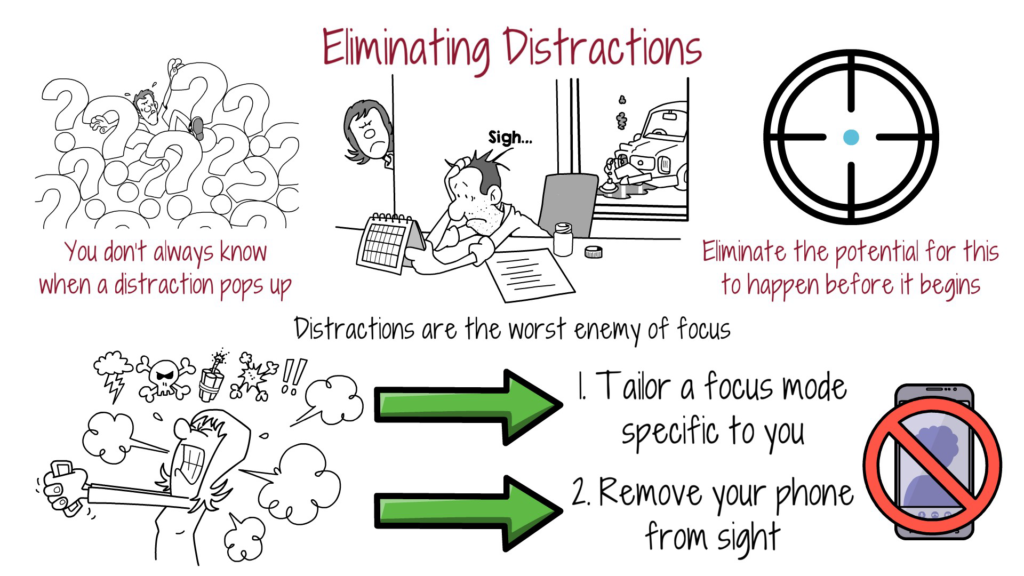
It’s simple, really. If you find your phone’s notifications are offputting, tailor a focus mode specific to you. For example, iPhones allow you to select who and what you wish to receive notifications from, eliminating needless distractions from apps that have no right in acquiring your attention.
Failing that, remove your phone from sight altogether. The mere allure of your phone is often enough to pull focus from something else. Simply putting it in a drawer or another room makes it more difficult to be distracted because you’re removing the ease having your phone by you provides.
While your phone is perhaps the most obvious and frequent source of distraction, it’s not the only one. Emails, dogs barking, nearby traffic – just about any external noise can hog the limelight and pull you from a focus state. Then there’s situational distraction, where it may prove difficult for people working from home, for example, to maintain focus. The cure, it seems, lies in the environment you create.
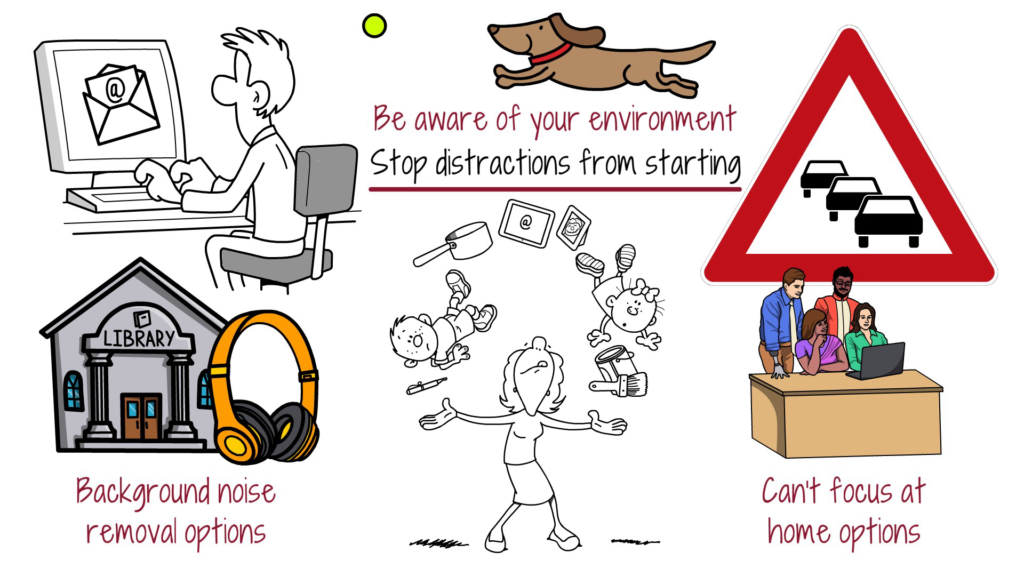
If background noise is offputting, work in a library or put some noise-cancelling headphones on. If you’re at home and can’t focus on the task at hand, try and complete it elsewhere, such as a communal workspace.
You’ll likely have systems that work best for you. One constant among everyone reading this article, however, is to understand that distractions are focus’ number one enemy. Find out how to stop them from starting will go a huge distance in helping remove focus struggles.
Setting S.M.A.R.T Goals
At the start of any new year, people will naturally think about what they’d like to do differently. New goals – or resolutions – are set with the hopes of maintaining every single one. In this day and age, merely setting goals isn’t effective enough. Big, overarching goals are great, but because they’re so large, they often appear unattainable.
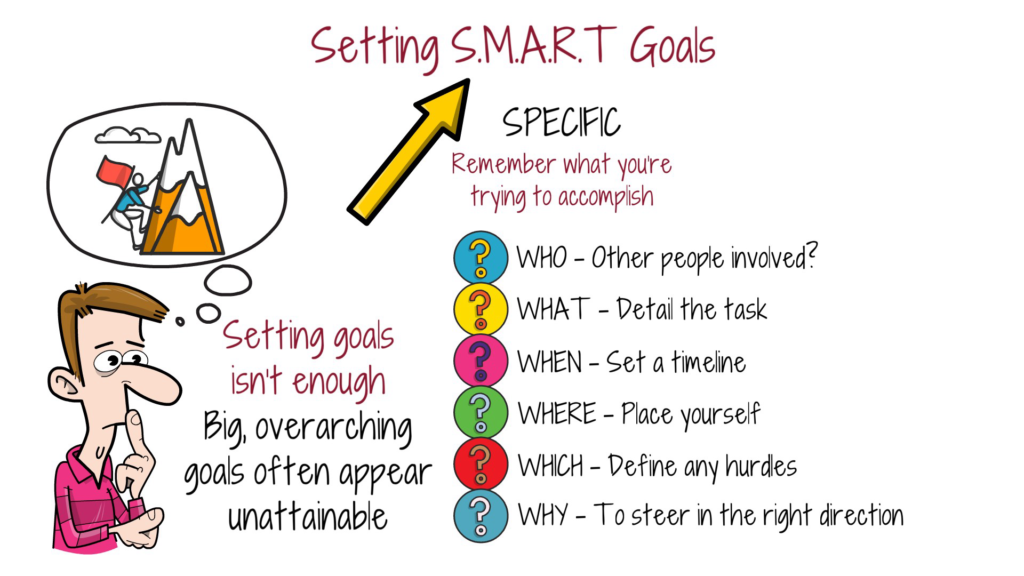
To remove the struggles of focus, set S.M.A.R.T goals. Here’s what it all means, as explained by Smart Sheet:
Specific
When setting a goal, it’s important to remember what you’re trying to accomplish because otherwise it can feel open-ended. You can do this by asking the ‘W’ questions:
Who: Some goals require other people’s involvement, so knowing who that is will prove vital.
What: Detail the task at hand so you know what it takes to achieve.
When: It’s difficult to know when you’ll realise a goal, and while it can feel pressurised, setting one helps visualise your timeline.
Where: Might not always be relevant, but placing yourself can be helpful for setting personal goals.
Which: Here, define any hurdles you’ll have to overcome to reach your set goal.
Why: Perhaps the most vital question of all, knowing why you’re working towards a goal is critical for steering yourself in the right direction.
Measurable
Goals, especially long-term ones, can feel purposeful to begin with but difficult to track. The further along you get on your journey, the greater the risk of losing your way. That’s why it’s important to figure out a means of measuring your progress. For example, milestones such as earning your first £1000 or running a 6-minute mile are a good way of measuring your current and projected success.
Achievable
Sometimes it’s great to let your mind wander. You’ve likely daydreamt about an outlandish situation that doesn’t seem attainable, but that doesn’t make it any less exciting to think about. With this element of S.M.A.R.T goals, you’re looking at how critical a goal is to you and whether or not it is attainable.
This requires honesty and acceptance. To reach a goal, you must have the means – the tools and skills required to put yourself in the best possible position. Otherwise, you’re heading for disappointment and a loss of motivation.
Relevant
Everything should be in line with the goal you’ve set. Subsequent decisions must be in line with that otherwise you are potentially creating more issues for yourself.
Time-Bound
While it can feel like a lot of pressure to set yourself a timeframe, it’s important to be realistic with your timing. A target date with questions throughout that time period asking what you can accomplish helps create a sense of urgency and understanding of where you are.
Focusing on Similar Tasks
In Cal Newport’s Deep Work, the importance of staying on track is emphasised throughout. For example, let’s say you’re trying to write an email. You think it’s not that big a task, so you keep some other tabs open in your brain and work on something else in the background: Buying Christmas presents, perhaps. While you may feel in control, there’s a limit.
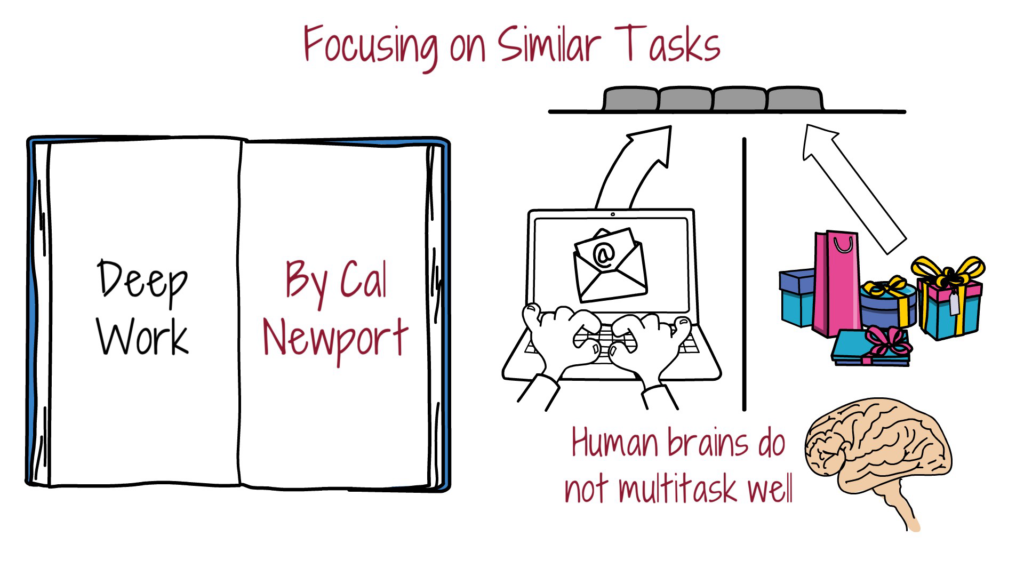
The thing is, human brains do not multitask well. Instead, your mind is simply jumping to and from tasks. Given you can’t give full attention to one, you’re splitting your time and not performing to the best of your ability.
Newport suggests sticking with a task until it’s end as it’s more efficient to focus on one thing over multiple. If there are lots of different tasks, make sure they’re similar to what you’re doing originally, as it keeps your brain in line. For example, if your main target for a day is to write an article, then other tasks such as reading and listening to calm music can help put you in the best possible position to maintain focus for longer.
Keeping Focus Doesn’t Need to Be a Struggle
This article is designed for one thing – helping you see the difficulties that can arise when trying to focus needn’t be feared. All it takes is an understanding of your shortcomings. Once that’s acquired, you can figure out the right path for you.
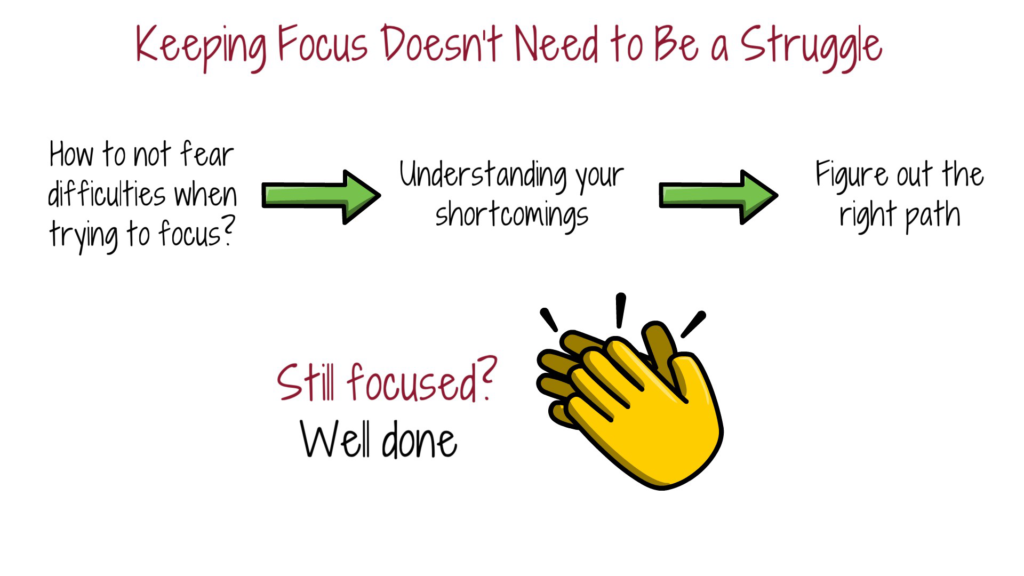
If you lost focus during this article, don’t worry. Here’s a brief recap on how to remove the struggle of focus:
- Eliminating distractions. Putting barriers up between you and any distraction – whether that be a dog barking in the distance or your phone’s notifications – puts focus first and, most importantly, places you in charge.
- S.M.A.R.T goals. It can be difficult to maintain focus if you don’t know what you’re focusing on. S.M.A.R.T goals are a useful way of visualizing your path to goal accomplishment as they require detail.
- Focusing on similar tasks. While it may feel productive to tick off as many items off your to-do list as possible, it’s much better to do one thing well over six half-baked tasks. Put your brain in the right mindset instead of flitting from headspace to headspace.
So, there you have it. If you’ve managed to maintain focus throughout this article, thank you and well done. If you struggled, perhaps this very list will help you out.
